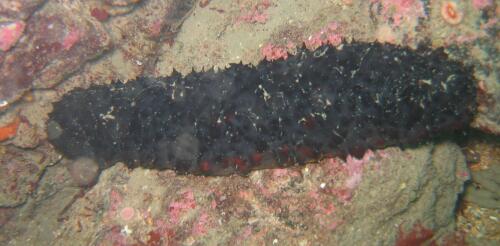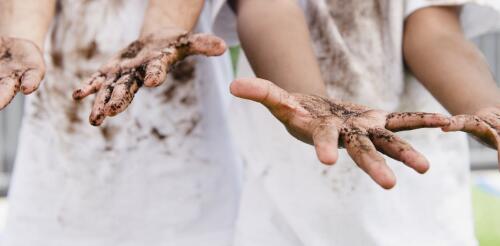environment
Flint, Michigan, made headlines in 2015 when tests revealed dangerously high lead levels in its drinking water. The city had switched its water supply to the Flint River a year earlier, and corrosive water had damaged aging lead pipes, exposing thousands of people to lead contamination. The result was a human health crisis that residents are feeling the effects of to this day. And Flint was only the tip of the iceberg. The EPA estimates that 9.2 million service lines that deliver drinking water to U.S. homes and businesses are made of lead. The federal government considers replacing these lead pipes a top priority and has launched a variety of initiatives to help, including the 2021 Infrastructure Law, which committed US$15 billion over five years to lead pipe replacement. The EPA is now proposing to require the removal of lead pipes across the U.S. within 10 years. The agency has been silent, however, regarding what should replace lead....
Sea cucumbers, scavengers of the seafloor that resemble the cylindrical vegetable, have been consumed as a delicacy in Asia for centuries. But in recent decades, they’ve been severely overharvested to a point that they are now quite rare. New research I helped conduct suggests their repopulation could play an important role in protecting and revitalizing another type of endangered marine organism: corals. Coral reefs are in decline around the world partly due to diseases, some of which are associated with sediment on the seafloor. In several field experiments involving corals in Moorea, French Polynesia, and around Palmyra Atoll, research scientist Cody Clements and I, along with two other colleagues working on marine microbes, found that sea cucumbers grazed and consumed bacteria in the sediment, and that sea cucumber presence prevented pathogens from sickening co-occurring corals. We learned this by either removing sea cucumbers from certain sand patches, while leaving...
As the weather warms, people spend more time outdoors, going to barbecues, beaches and ballgames. But summer isn’t just the season of baseball and outdoor festivals – it’s also lightning season. Each year in the United States, lightning strikes around 37 million times. It kills 21 people a year in the U.S. on average. For as often as lightning occurs – there are only a few days each year nationwide without lightning – there are still a lot of misunderstandings about nature’s largest spark. Because of this, a lot of people take unnecessary risks when thunderstorms are nearby. I am a meteorologist who studies lightning and lightning safety, and a member of the National Lightning Safety Council. Here are some fast facts to keep your family and friends safe this summer. What is lightning, and where does it come from? Lightning is a giant electric spark in the atmosphere and is classified based on whether it hits the ground or not. In-cloud li...
Nearly two-thirds of U.S. households have at least one pet. More than ever before, companion animals are a part of life – particularly in cities, where the majority of Americans live. Cities offer access to many resources, but often it’s not distributed evenly. Some scholars describe parts of U.S. cities with few or no grocery stores as food deserts. Others have identified zones they call transit deserts, where reliable and convenient public transit is scarce or nonexistent. While the “desert” framing is controversial, there is little disagreement that access to goods and services in many U.S. cities is unequal. I have studied urban animal welfare issues for the past 15 years, and I have found that the inequities and economic stress humans face affect animals as well. Recently, University of Nebraska geographer Xiaomeng Li and I explored access to animal welfare services in Detroit. We found that pet resources were significantly more likely to be loca...
As spring phases into summer across the U.S., kids are spending more time outdoors. Playing outside is healthy in all kinds of ways, but it also poses some risks. One that many families may not be aware of is exposure to lead in soil, which is still a serious problem, mainly in cities. Children can be exposed to lead by swallowing or inhaling soil while they are playing. Young children often put their hands in their mouths and may have dirt on their hands. Kids and pets also can track lead dust from soil indoors. And anyone who eats fruit or vegetables grown in contaminated soil can ingest lead. Early in 2024, the U.S. Environmental Protection Agency lowered the screening level for lead in residential soils from 400 parts per million – a standard that was more than 30 years old – to 200 parts per million. This more protective lower number reflects current understanding of soil as a significance source of lead exposure for children. EPA officials said that at homes...




